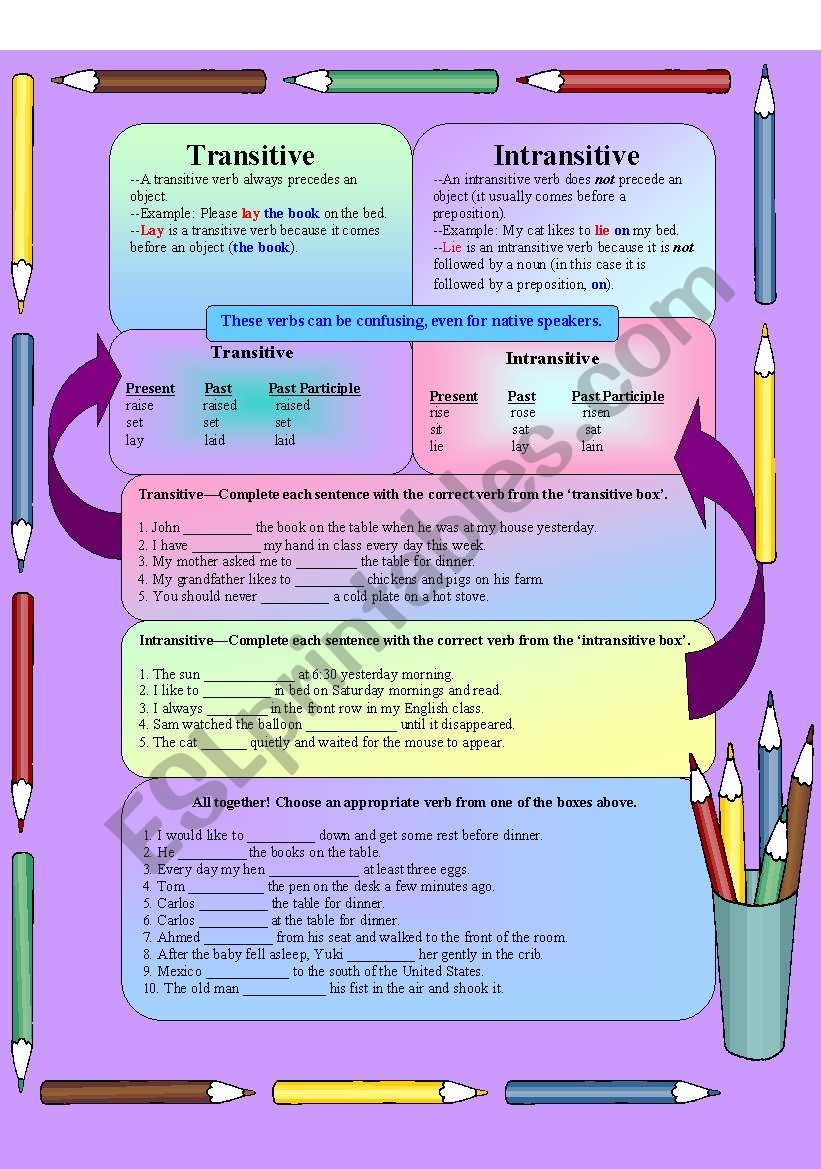Understanding the difference between transitive and intransitive verbs is crucial for mastering the English language. Transitive verbs require a direct object to complete their meaning, while intransitive verbs do not. By practicing exercises that focus on these types of verbs, you can improve your grammar and communication skills.
Whether you are a student looking to enhance your writing abilities or a language learner aiming to become more fluent, transitive and intransitive verb exercises can help you achieve your goals. Let’s delve into some exercises that will strengthen your understanding of these verb types.
Transitive and Intransitive Verb Exercise
1. Identify the verb in each sentence and determine if it is transitive or intransitive. For example: “She ate the delicious cake.” In this sentence, “ate” is a transitive verb because it requires the direct object “the delicious cake” to complete the action.
2. Create sentences using both transitive and intransitive verbs. Practice distinguishing between the two types by analyzing the structure of each sentence. For instance: “The cat slept peacefully on the windowsill.” Here, “slept” is an intransitive verb as it does not require a direct object.
3. Rewrite sentences to change transitive verbs into intransitive verbs and vice versa. This exercise will help you understand how the presence or absence of a direct object impacts the meaning of a sentence. For instance: “He read the book” can be rewritten as “He read” (intransitive).
4. Complete fill-in-the-blank exercises with the appropriate transitive or intransitive verb. This activity will test your knowledge and application of these verb types in context. For example: “The children _______ the playground after school.” (played – transitive)
5. Practice conjugating both transitive and intransitive verbs in various tenses. This exercise will reinforce your understanding of verb forms and how they interact with direct objects. For instance: “She will bake a cake.” (transitive)
By engaging in these exercises regularly, you can improve your ability to identify and use transitive and intransitive verbs effectively. Remember to pay attention to the structure of sentences and the role that direct objects play in completing the meaning of transitive verbs. With dedication and practice, you will become more confident in your language skills.
Enhance your grammar and communication skills by incorporating transitive and intransitive verb exercises into your language learning routine. These exercises will not only improve your understanding of verb types but also enhance your overall proficiency in English.
